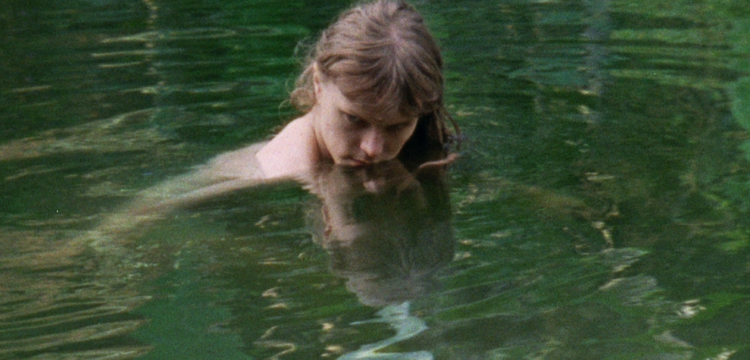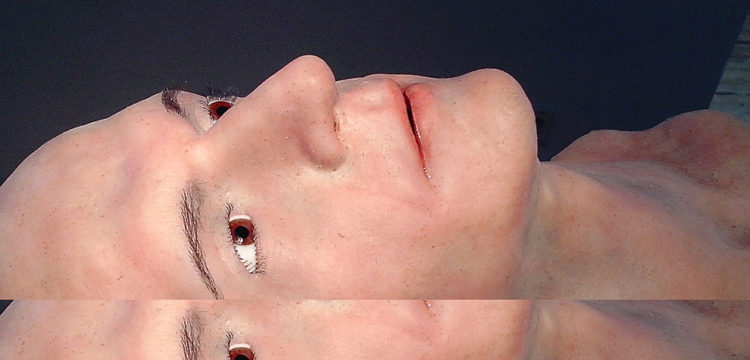But, is it Art?
A conversation on video art, new media, curatorial practice, artists’ collaborations, museums’ collections and preservation
Valentino Catricalà: Today the relationship between art and technology has changed. Video art has probably been the first trend to recognize technology as an artistic medium. Video was a new medium in the sixties and seventies, and its artistic use has been named video art. Video art was a political, aesthetic, philosophical approach to television, for a different kind of television; to society, for another society; to communication, for another communication. The social and aesthetic sphere were closely influencing each other, and young artists were less interested in the development of technology itself. Today the development of technology gives me the impression that we are living in an everlasting future, as if we are always on the threshold of change. Once on the market a medium is already old while another is in production. On the one hand, this changes the way in which artists work, on the other, through technology artists change the way in which we conceive innovation. In arts, we are passing—or we have already switched from video art to using technology in general. In my opinion, it is necessary to analyze this aesthetic shift, from video art to new media, from the 60s to nowadays.
Barbara, you have been one of the most important personalities and experts in the video art field —today we could also say “media arts” field—and you are working with one of the most important institutions which founded the first video art section. Your upcoming new book on video art, will be published by Phaidon (fall 2019). How you see this passage between the beginning of the video art to our current situation, where art connects to very different fields?
Barbara London: It’s a wonderful matter, that touches on recent transitions in contemporary art. I began my career when video as art was emerging, when portable video cameras had been on the consumer market for a few years and were being picked up by artists, who were on the lookout for new possibilities and opportunities. I worked closely with the early makers, such as Nam June Paik, Bill Viola, Laurie Anderson, artists who had a foot in music and the other in alternative practices. I engaged with art in this very fluid, transitional time. Next we saw computers go from room size to small-ish main frame ones and then become laptops. Gradually video editing possibilities became more precise and somewhat easier. But the colossal transition arrived with the Internet, which artists explored and asked “What’s that medium?” They had already figured out that video was X, Y, and Z and installation was A, B, and C. But what’s this tool through which you can quickly send and receive something?
Next we had streaming. The question became, do you put out your new sound and visual compositions into the world that way? And then we come to the latest frontier, which you could say is VR and augmented reality, so what is that? It’s basically still the idea of working with technology to explore the complexities of image, space, installation and sound. In all of this, what is the personal vision and personal voice? That is what remains of most interest to me.
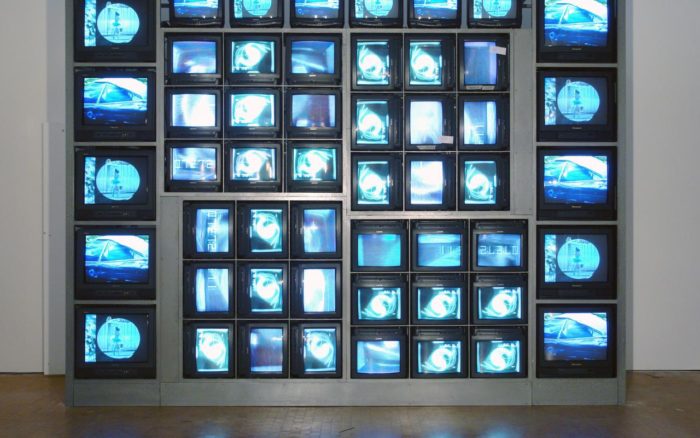
Nam June Paik at ZKM | Karlsruhe. © ZKM | Karlsruhe.
Asher Remy-Toledo: For me it came out of an existentialist moment. I wanted to be mindful, to be part of history in the making, to make things happen. I didn’t want to focus so much on the past but on the new-new-new. On the new things that are coming out from all these emerging technologies. So when I started Hyphen Hub I began thinking about this as one more extension of art. From the very first public event that I did at the Red Door, a speakeasy night club in New York that has since closed, I brought lots of people who were not necessarily from the art world together. Because the art world can be very narrow, but for me technology is something that really expands beyond art. It affects every level of society. So at that very first event, an artist came to me and said “This is really amazing what you’ve done here tonight. I haven’t seen anything like this in years. But is it art?” There was a microsecond when that question bothered me but then I thought “What if I care if this is art or not?” That’s why I’m here.
I’m exploring all these new mediums and bringing all of my interests together in this particular way of expressing them. From that point on, I started to seek for creative people who didn’t consider themselves to be artists in the traditional sense, people who were exploring these emerging technologies. Some consider themselves creative technologists or FashionTech designers, or they are working with sound in different ways, stuff like that. It’s been very organic. I’m very selective about the artists I want to work with. Each one is someone I want to build a relationship with, to get to know better in order to better understand their work. More than being a curator I’m an instigator. I like to bring together all these artists and fields that would not have been put together otherwise. I bring ideas to the conversation to try to create something new. It’s a collaboration.
Valentino Catricalà: Exactly, what is the point to be an artist today. Especially with technology that blur the borders. Artists, designer, architects, fashion are closer today. In the beginning, when video art started, there was a very critical attitude to the media, to the society as well, from the most radical software, for instance, Nam June Paik for instance or Vasulka. I don’t know if artists still have this attitude towards technology and society.
Barbara London: I think that in the late 1960s when the portable video camera first reached the consumer market, artists saw television as a powerful monolith. Museums were also considered impenetrable monoliths. Many artists were unhappy about the power they felt those institutions held. Artists worked with alternatives, such as site-specific land art, as a way to work outside the existing art system. To work with the very inexpensive mimeographed artist book, which often cost around $2, was another alternative art form. An unlimited edition, modestly priced single channel video was a way to be independent and make work that critiqued the television system. There was a lot of experimentation going on. We always have many different twists and turns that happen at any one time. Whether it’s a cultural war, the Vietnam War, or another war, you have artists who are very critical of the status quo. Now artists are able to get their work up on the Internet and make announcements visually through Instagram. In this way, less money may go towards PR. Covering the cost of living is something that’s too complex to really get into.
Valentino Catricalà: Especially in New York!
Barbara London: I live in New York and know that rent in Manhattan is astronomical, both for an individual and for small galleries and nonprofit institutions. People are forced to move farther and farther away from the center. But what’s really important is networking, whether that’s Hyphen Hub or other social formations. What’s important is getting to know someone, getting to talk with individuals more than once. In the past, an artist would ask me, “How do I get into the MoMA’s collection?” I would say, it starts with a conversation. It’s about me seeing work, reading the artist bio, me reading articles about the artist’s work, me taking notes, me taking photos of work, etc. That’s how I develop a context. It takes me time to understand what the artist’s voice is really all about and how the artists uses tools to express ideas. I have to work hard to make sure I am putting the artist’s work into the right context. I am always questioning myself, and I don’t take anything for granted.
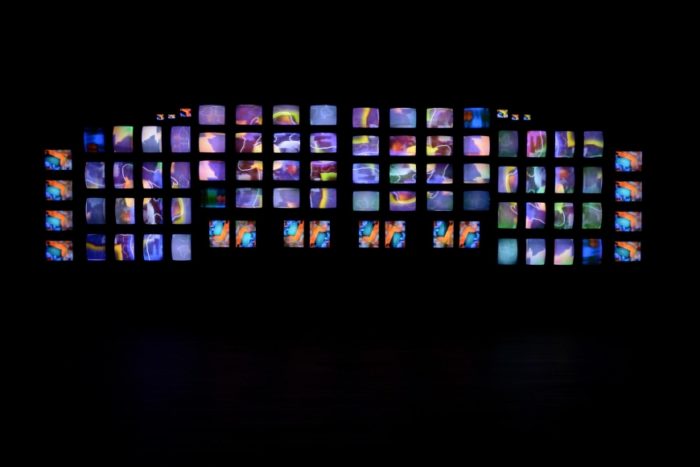
NAM JUNE PAIK M200/Video Wall, 1991, Television monitors, Cha Zoo Yong Photography Copyright POMA / fazi, inc.
Valentino Catricalà: It’s also a matter of content. I believe artists can be very important not only for the contemporary art world but for society in general. Today we should look at media technology in a different way. According to Sean Cubitt and Paul Thomas, the media we use are not just feats of engineering but also imaginary engines, imaginary in that we ascribe to them a coherence they do not actually possess.
It has been the work of artists dealing with technologies to show a new way to conceive media technology. The practice of artists however, puts into question the idea of a linear evolution of media. Without any prejudicial interest in the difference between new and old media, analog and digital, artists mix the images, sounds and processes of differing media, consistently renewing concepts of evolution, giving rise to a new vitality in media development. Experimenting with technology, bring another vision. In my opinion, artists are showing a “new dark age” (to quote James Bridle), by critically addressing anthropocentrism, new ecological attitudes, i.e. recognizing the power of plants and so on.
Asher Remy-Toledo: Yes, it’s definitely about content as well. I am very interested in artists and creators who have a deep connection with humanity, which to me is what matters at the end of the day, something that connects people.
We are moving so fast nowadays and there are a lot of people who are just looking for the splashy thing, like Times Square, the selfie, etc. Of course these things are interesting because are part of this moment, but t my mind doesn’t engage for too long. I like works that have critical thinking behind them, works that move you somehow. When I’m inspired by a work, I want to go out and tell everyone about it. Works that make you think about things long after you’ve seen them. Because artists can talk about very serious things in engaging ways that bypass a lot of filters that we put in.
Valentino Catricalà: This regards not only art but fashion, design, architecture…
Asher Remy-Toledo: You know, this is my particular approach to things!
Barbara London: I think it’s true. We want an artwork to take us somewhere we haven’t been before. Great art is based on many factors. It’s not the same old, same old. Great art challenges you. It’s something that can be done through music or visuals, through word and design. Sometimes it’s about collaboration. Collaboration can be short lived and that’s fine because collaboration is when two people or more come together and take each other to a new place. Maybe they’ll eventually split apart, but they’ve gone on a journey and take us—the viewer, to the same journey.
Asher Remy-Toledo: To echo Barbara’s comment, there are several artists that we know to have done wonderful collaborations. They got together and they just talked and talked without anything specific in mind. But out of this conversation something is born: a trust, a connection where they feel they have a shared vision. Through art we are able to be exposed to other things that would not have been possible otherwise. We humans are usually more focused on the differences between us. We build walls around us, but when art comes from a very personal journey it somehow develops a more universal language people may connect with.
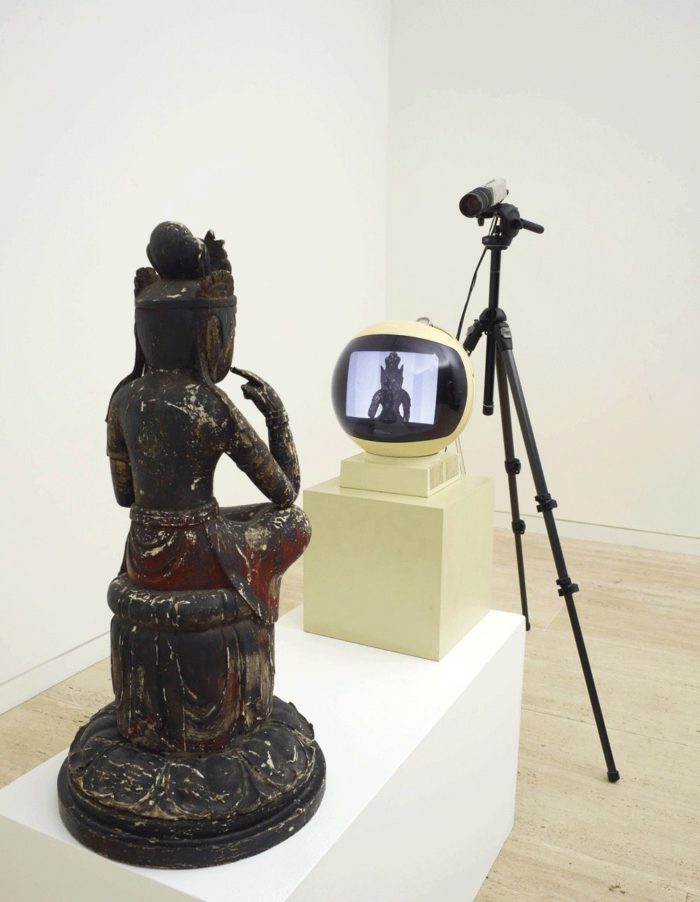
Nam June Paik, TV Buddha, 1976. John Kaldor Family Gallery, Art Gallery NSW
Barbara London: Then there is another factor: What we understand and believe at different moments might change over time. That is because understanding comes from different places and represents what you may have been thinking at that moment of creation. What was considered a great work in the 1960s may not be considered a great work if it had been done in the 1990s. And now we are in 2019. Work that has been long forgotten is also of interest to me. And what will be forgotten from today, perhaps things that we now think are so fabulous; however, two generations from now people are going to say, “Oh gosh, wasn’t that crazy or what?” When selecting works for the permanent collection of the MoMA, we always thought about whether we were choosing the best, if we were getting it right. The first director of MoMA used to say that even if we thrive to get it right, historians may look back and say we were ten or twenty percent right, then we will still have succeeded. What inevitably happens is that decades later a curator will delve into the MoMA collection’s paper archives and enter the storage rooms and see work afresh and will think about work differently and in a new context.
The same thing will happen to works that are being created today. Works will be rediscovered because they’re being viewed afresh in another context. I always tell my grad students, “You are the curator of your life. If you don’t take care of your work, nobody else will.” It’s the same for work that employs technology. If you don’t upgrade the systems, then when the software becomes obsolete, the artwork will be gone. At MoMA, we knew that when you acquire a work you are making a major commitment. It means that in future the institution will honor what the artist had deemed the aesthetics of a work and how they explained their vision, and if appropriate how to handle the upgrade with new equipment. In some cases, the institution will stock pile the old equipment, if that is what is needed. These are big responsibilities, both for the artist, the collector and the museum. It is also a responsibility for writers and curators, about how we position works in the world so that viewers can know about them and understand them. To this end, it is important to write relevant texts in a language that is accessible. This is central to the task of curators.
Asher Remy-Toledo: Yes, I agree with those last words. Traditionally, there have been many curators who write in a very complicated language, alienating people from the works. But I feel those curators are missing the essence of the work. I didn’t want to contribute to this tradition of making art inaccessible. I just mean we need to re-evaluate the way things are written because we have a complete new generation of audience that doesn’t relate to that old way.
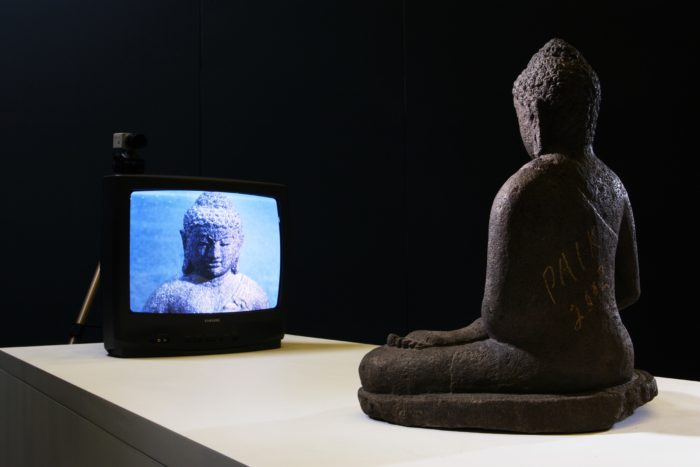
Nam June Paik – TV Buddha, 1974/2002, Statue of Buddha, TV monitor, closed-circuit camera, color, silent, dimensions variable.
Barbara London: Another thing I would like to stress is that we need to be able to fail. We are in a moment where people can be so critical. In the old days, when the art world was very small, when news didn’t travel with the immediacy of today’s social media, artists could make work and stumble. There was the freedom to experiment. Now people have to think about a) rent is high b) software is expensive c) PR via Instagram is instantaneous. Does one put out a work before it’s finished, and say here it is, I’ll take the blows and the insights?
Asher Remy-Toledo: I think that definitely many people are more afraid of failure now because of social media. You put something out there and you take the risk of having tons of trolls who are going to jump all over you and say, “You are wrong!” or “Fuck you!”. There are many people out there who are just determined to hate you. So this social media creates a lot of anxiety and prevents artists from taking risks or showing works before they think they’re perfect. I believe that society has become too conformist and has lost a lot of its edge, especially in the developed world. It reminds me when I was running the Red Door in Chelsea. I was always mindful of the space’s amazing history as an underground place which housed many of the greatest talents in music. I decided to keep that memory as a daily inspiration for me. That space represented that raw essence, a space for taking risks. Failing is part of succeeding because if you are always going to play it safe, nothing is going to happen really. I am not afraid of taking risks, of showing works and ideas in progress. Some things grow and become very beautiful; others get lost along the way but sometimes they come back.


